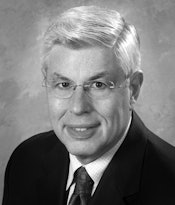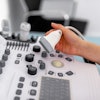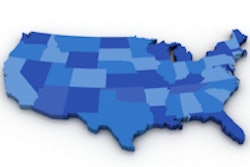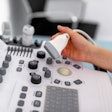
The job market for radiologists in 2015 seems to be improving, according to the fourth annual workforce survey by the Commission on Human Resources at the American College of Radiology (ACR), published online in the Journal of the American College of Radiology. But those jobs won't necessarily utilize one's fellowship skills.
"The majority of radiologists work less than 50% of the time in the areas of their subspecialties," wrote lead author Dr. Edward Bluth, of the Ochsner Clinic Foundation in New Orleans, and colleagues. "[So] residents should focus on becoming well-versed in all areas of their specialties before entering fellowship or subspecialty training."
Decline of general radiologists?
Bluth and colleagues used the Practice of Radiology Environment Database (PRED) to identify 1,742 radiology practices for their survey. Of these, 555 responded, for a rate of 32%; the responses represent 12,079 radiologists, or 39% of all practicing radiologists in the U.S. (JACR, August 24, 2015).
 Dr. Edward Bluth from the Ochsner Clinic Foundation.
Dr. Edward Bluth from the Ochsner Clinic Foundation.The survey asked participants to report the number of radiologists currently employed in their practice, the number hired in 2014, and the number they plan to hire in 2015 and 2018. It was sent via email in January of this year; final data were received by March. The survey also asked respondents to describe their organization type and to divide their departments between general radiology physicians and those hired to serve mainly as subspecialists. Finally, additional questions regarding gender and age distribution were included in this year's analysis.
Bluth's team found that 87% of survey respondents were subspecialists, with the most common subspecialty areas being body imaging (14.1%), general radiology (12.8%), general interventional radiology (11.8%), and neuroradiology (11.4%).
For the first time, the percentage of body imagers in the workforce is greater than the percentage of general radiologists, the authors noted. "This could be the result of the continual retirement of older radiologists who practice in general radiology," they wrote.
Are there jobs?
The survey data suggest that between 2012 and 2015, the year 2013 was the worst for hiring. But it looks like the job market for radiologists will improve in 2015, according to Bluth and colleagues, aided perhaps by a change in workflow needs depending on the retirement of senior radiologists: 7% of all radiologists are older than 65 years, while 22% are between the ages of 56 and 65.
"If these individuals decide to retire, the dynamics of the workforce could significantly change, creating a great need for additional radiologists," the group wrote.
More radiologists were hired in 2014 than predicted: 1,393, compared with the estimate of 1,114. For the first time this year, the researchers calculated a range of potential available jobs rather than a single number: For 2015, the data suggest there will be 1,131 to 1,484 new hires, with the largest percentage being general interventionalists, breast imagers, and body imagers. The bulk of these new jobs will be in private practice (47%), followed by academic or university practices (32%) and hospitals (17%).
For 2018, the survey data predict that 840 to 1,103 jobs will be available, although the researchers added a caveat to this estimate.
"Now that we have several years of experience with our survey, we know that the three-year projections are less accurate and reliable than the other information in our survey," they cautioned.
Where are radiologists working?
In terms of practice type, the number of radiologists in private practice remained stable. But there was a statistically significant increase in the number of radiologists employed by hospitals, compared with 2013.
| Radiologist employment by practice type | |||
| Practice type | 2013 | 2014 | 2015 |
| Private group | 54% | 53% | 55% |
| Academic university | 19% | 21% | 19% |
| Hospital employee | 11% | 16% | 22% |
| Multispecialty clinic | 14% | 8% | 4% |
| Corporate employee | 1% | 2% | 0.5% |
| Government (Veterans Affairs or military) | 1% | 1% | 0.3% |
Eighty-eight percent of radiologists work full time, while 12% work part time, the researchers found. In terms of gender, the survey showed that 21% of radiologists are women; 76% of these women work full time, compared with 90% of their male counterparts. Approximately one-third of female radiologists work in academic practices, in multispecialty clinics, and as hospital employees, rather than in private practice.
Also new in this year's survey were data showing that most fellowship-trained radiologists spend about a quarter to half of their time working in their areas of expertise. Radiologists in academic university practices were most likely to spend the majority of their time working in the area of their fellowship training.
"The present survey data indicate ... that although the vast majority of radiologists do fellowships, most radiologists outside of the academic university environment are expected to perform general radiology functions and interpretations," the authors wrote. "Individuals in training should realize that they will spend a significant [amount] of their time interpreting examinations outside of their fellowship subspecialties."




















